Tilbury Fort and Coalhouse Fort - defenders of London
28 January 2007
After the visit a fortnight ago to the source of
the Thames, today a visit downstream to two of the forts on the banks of the
Thames which used to guard the approaches to London - Tilbury Fort and Coalhouse
Fort.
Tilbury Fort
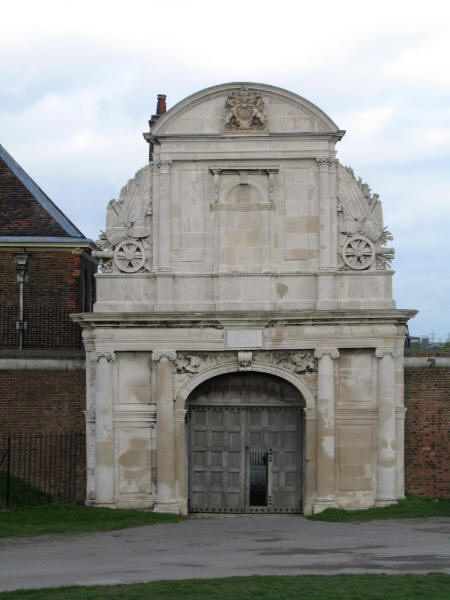
The Water Gate dates from 1682, and was the ceremonial entrance to the fort,
built to impress those on the Thames. The words above the door reference King
Charles II, who may have been the intended subject for the empty niche above.
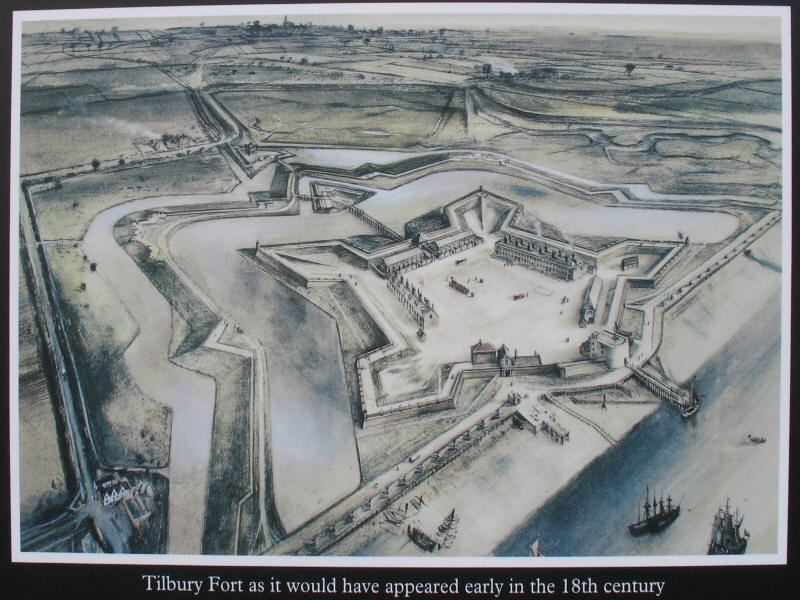
The original fort was a D-shaped blockhouse from 1539, but after a disastrous
attack on the English fleet on the Medway in 1667, Charles II began a huge
expansion and reconstruction of the site under the supervision of Dutchman Sir
Bernard de Gomme. The plan as shown above is the fundamental design still in
evidence today, with the four bastions and double moats. The original plan
called for a fifth, river, bastion, but this was never constructed.
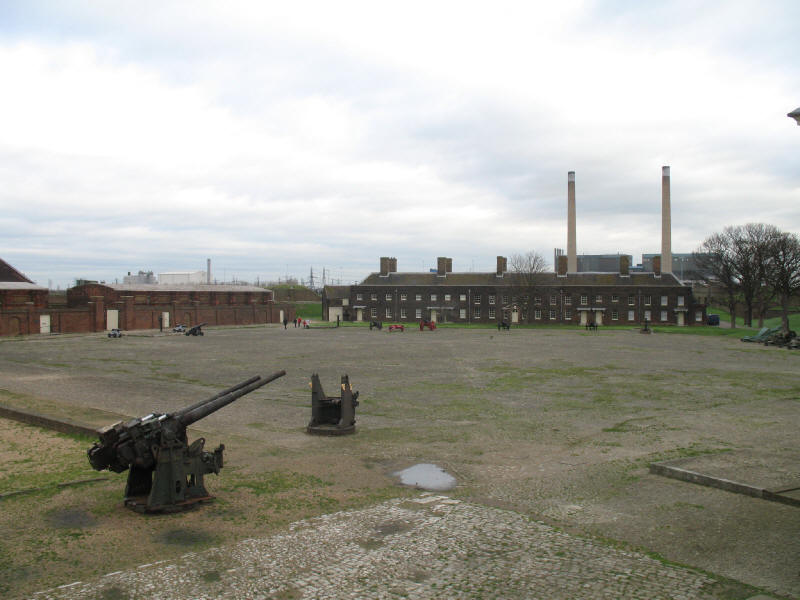
Inside the fort, looking to the officers' barracks, with Tilbury power station
behind.
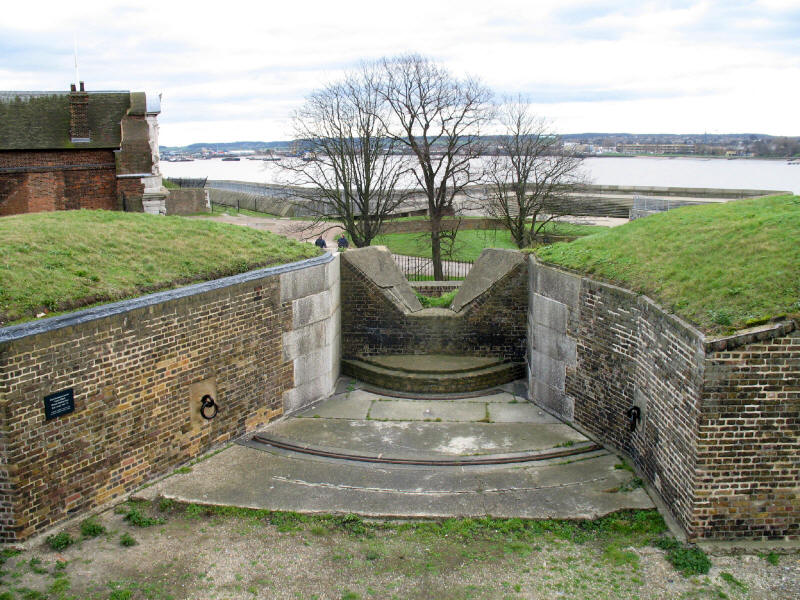
On the west bastion, built around 1685, looking down on one of the gun positions
reformed between 1868 and 1871. The 9-inch rifled muzzle-loading guns sited in
each of these positions weighed 12 tons and had a range of about 4½ miles.
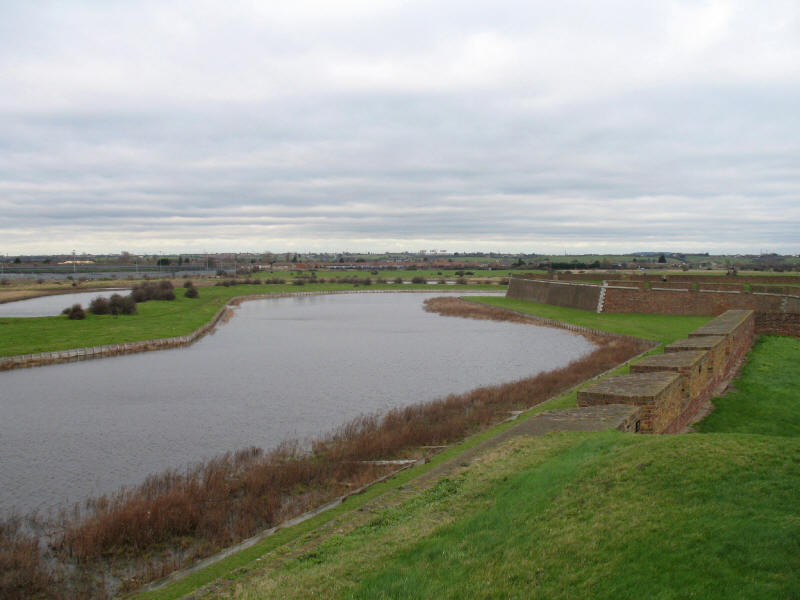
From the west bastion, looking across the two moats, and to the north-west
bastion.
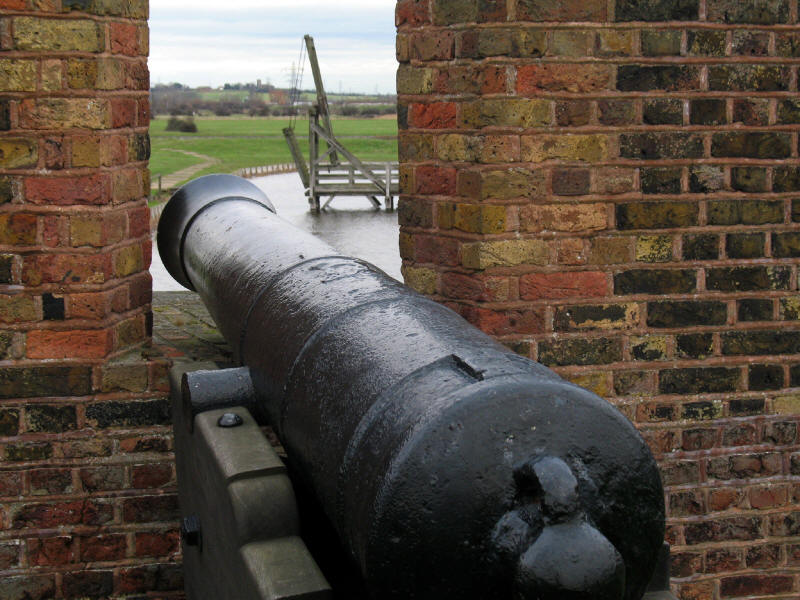
A gun looks out over the inner moat and the drawbridge of the wooden bridge over
the moats.
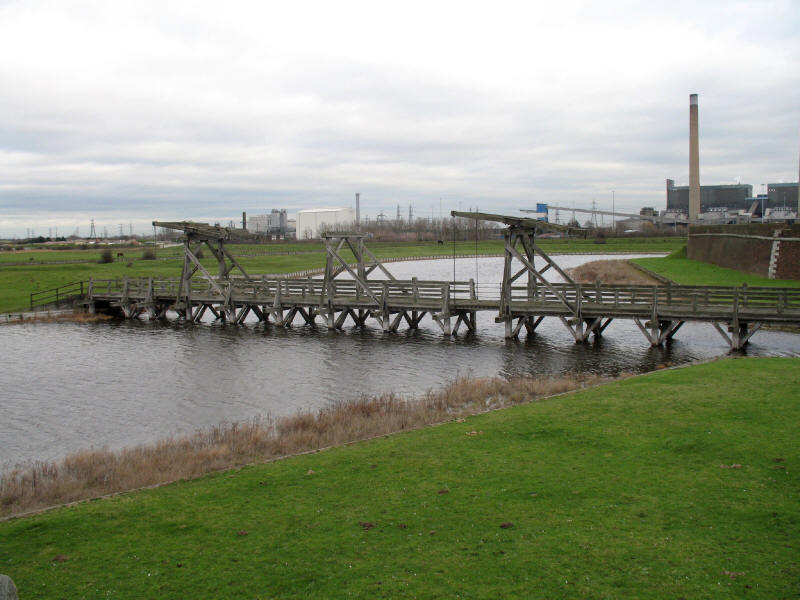
Bridge over the inner moat
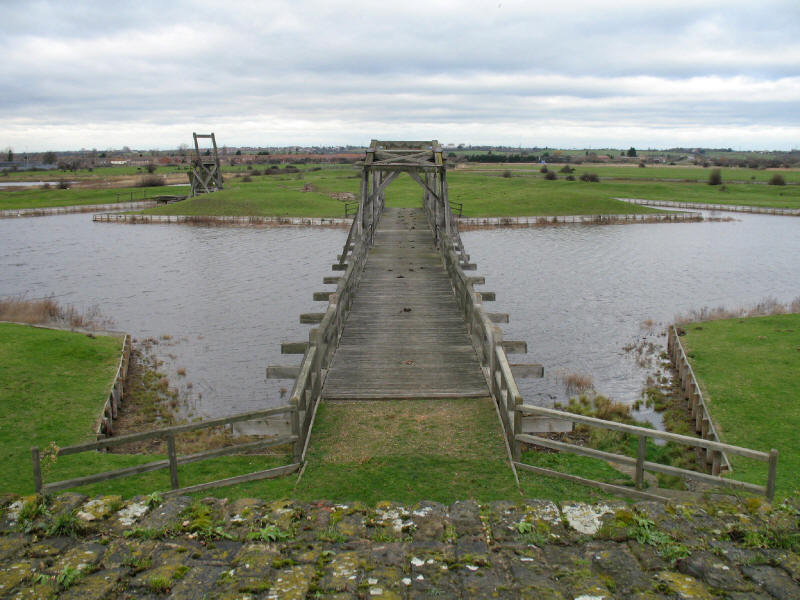
Bridges over the inner moat and connecting to the ravelin (a triangular
fortification detached outwork in front of the bastions).
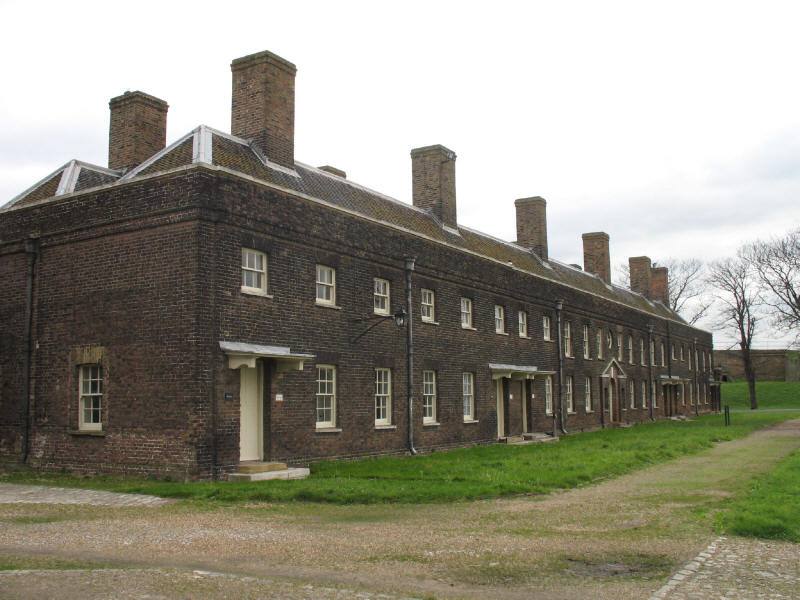
The officers' barracks, built around 1685 but rebuilt in 1772 and further
modified in the 19th century.
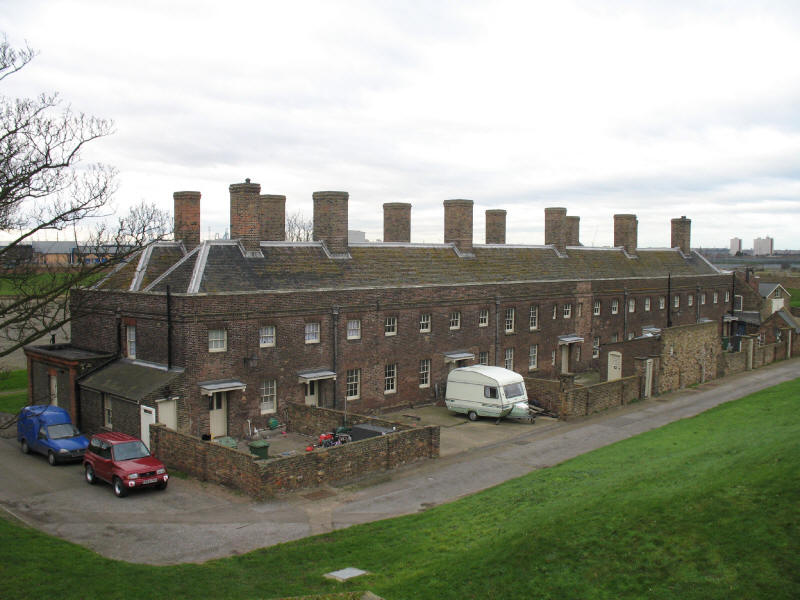
From the back, with authentic 19th-century details including caravan, wheelie
bins and satellite dishes.
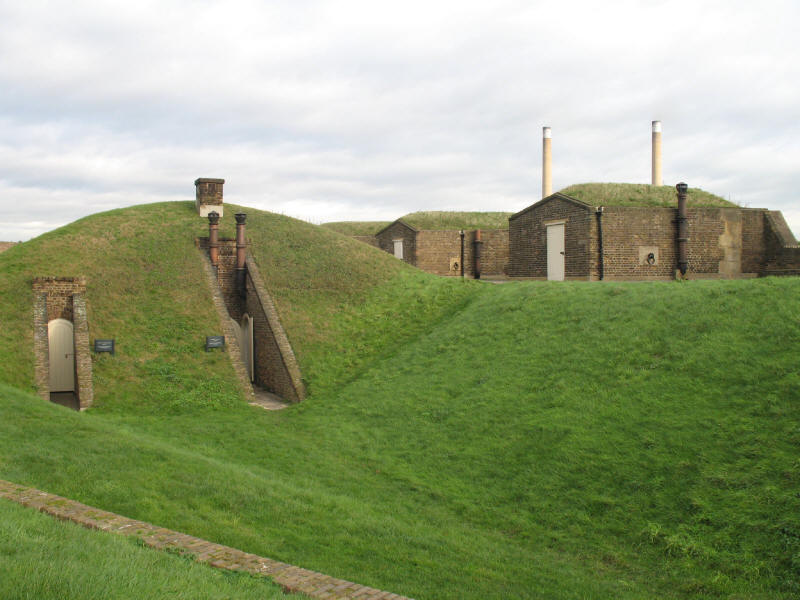
More of the placements for those 9-inch rifled muzzle-loading guns from 1871 are
on the right. Below and left is the magazine for storing shells. The left-hand
door is for a separate lighting corridor where lights were kept safely behind
thick glass, away from the shells. The other door is the entrance to the
magazine and its store rooms, which were linked via hand winches to the rooms
next to each gun.
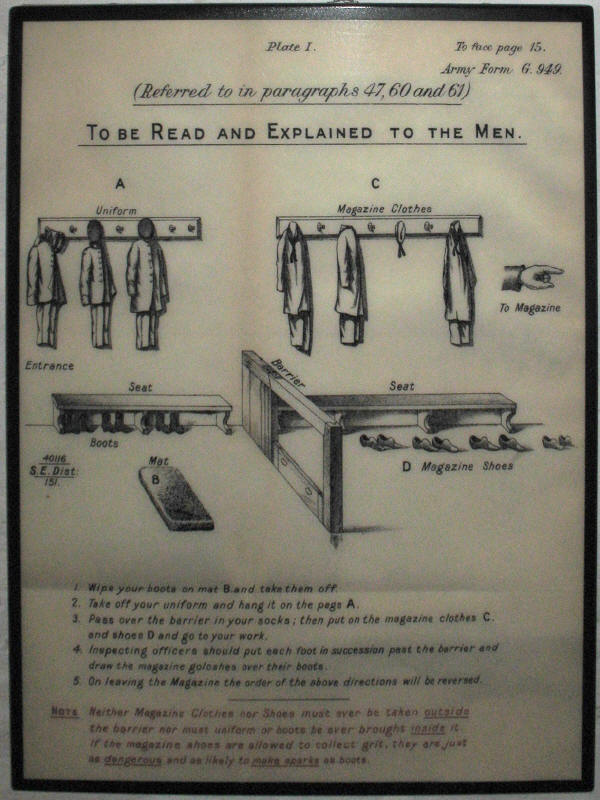
Instructions in the magazine entrance, explaining the safety procedures -
external clothes and boots (which might contain grit which could generate
dangerous sparks) had to be removed before passing the barrier, after which
magazine clothes and shoes were put on.
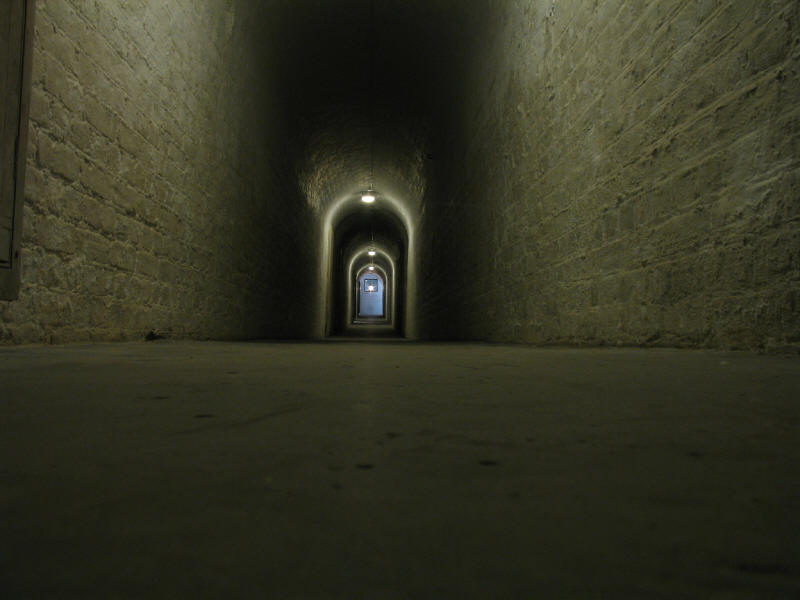
The corridor of the magazine.
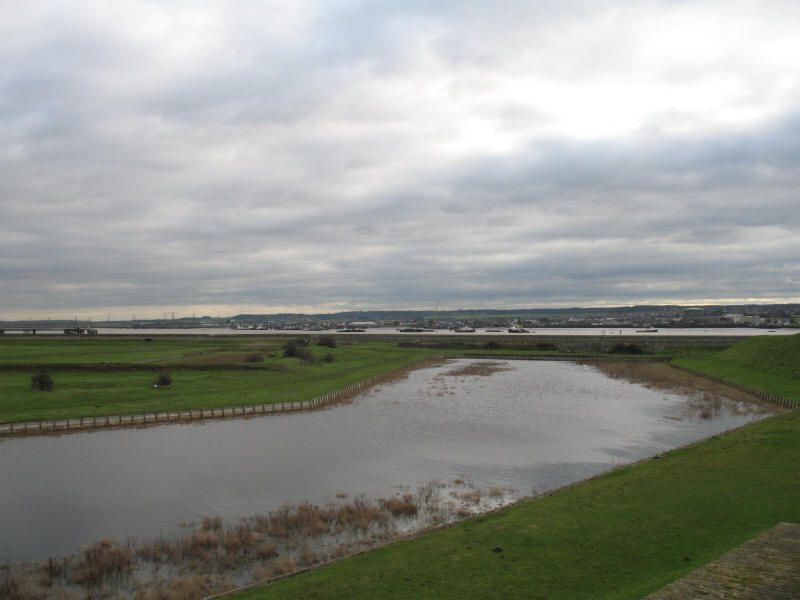
From the eastern side of the fort, looking to the Thames.

A more modern gun on the south-eastern bastion
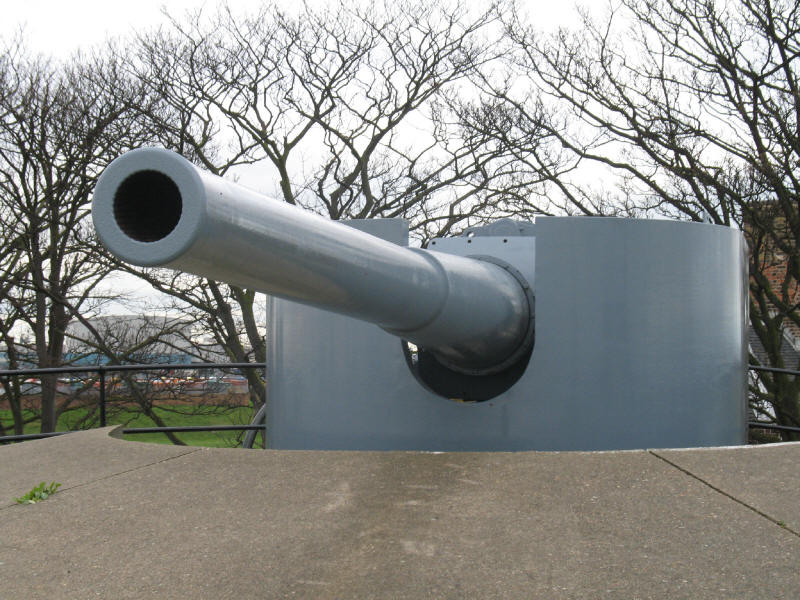
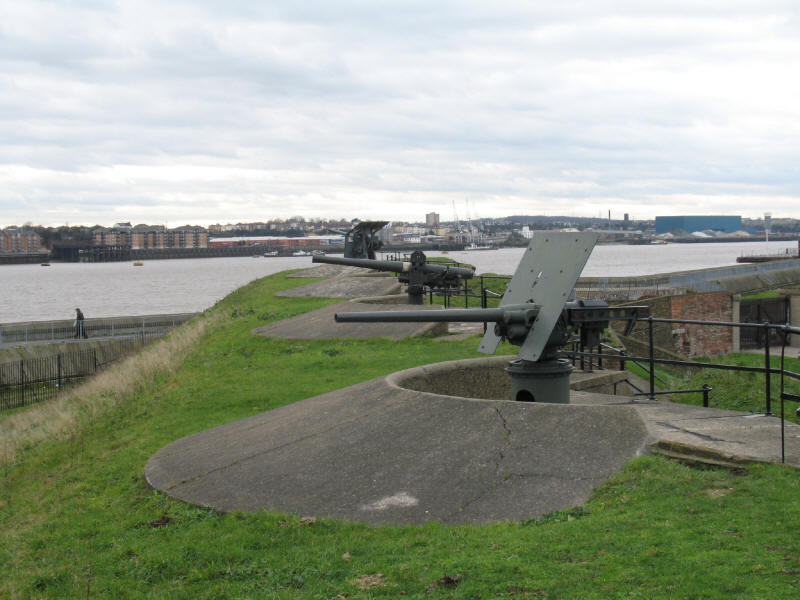
The quick-firing gun battery dates from 1902-3, and could fire a 12-pound shell
over 5 miles.
With three centuries of improvements, the feared French and Spanish
invasions never happened, and the fort's only military success came in the First
World War when anti-aircraft guns on the parade ground shot down a Zeppelin
airship. The fort was demobilised in 1950, and is now in the care of English
Heritage.
Coalhouse Fort
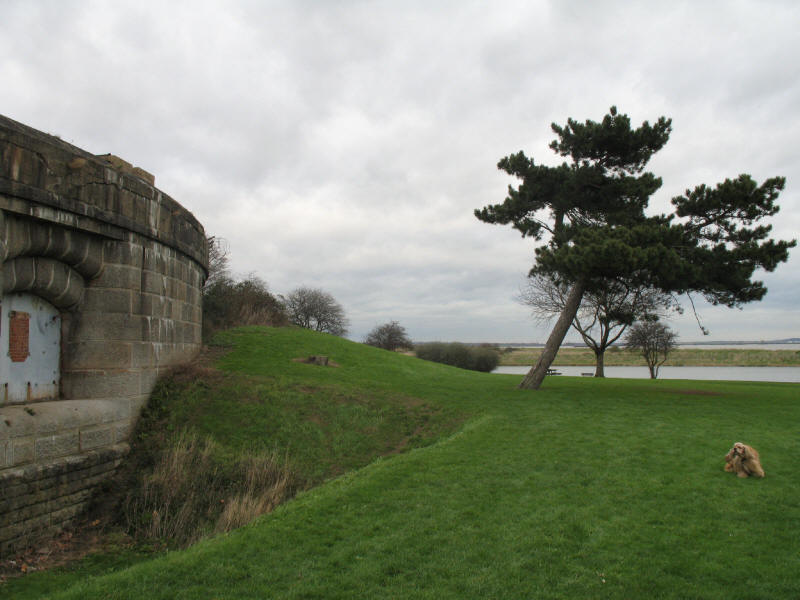
Just a couple of miles downstream is Coalhouse Fort, in the care of Thurrock
Council. Unfortunately it was closed, but we had a good wander around outside.
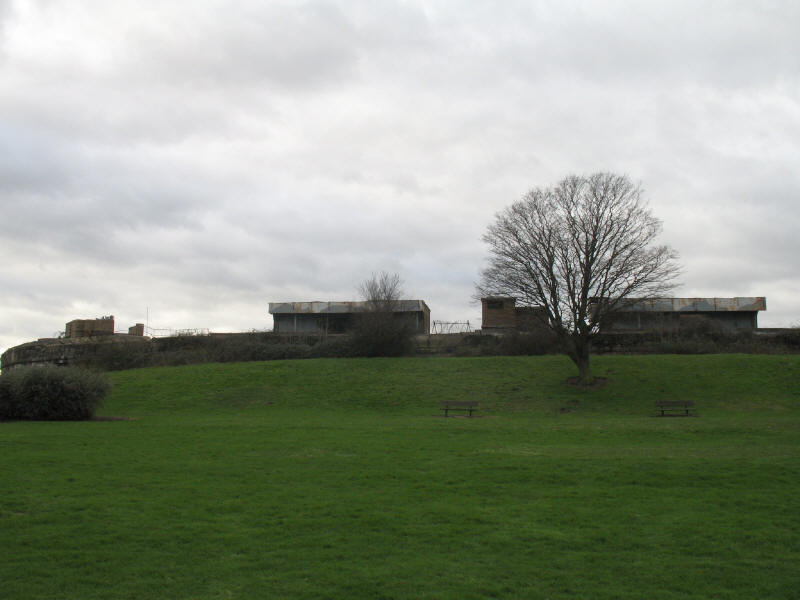
The fort was completed in 1874, on the site of previous gun batteries, to defend
the approaches to London from the perceived threat of invasion from France and
other continental powers. As can be seen here, it has been subsequently modified
to take more modern armament. Nevertheless, it is considered to be one of the
finest examples of an armoured casemated fort in the United Kingdom.
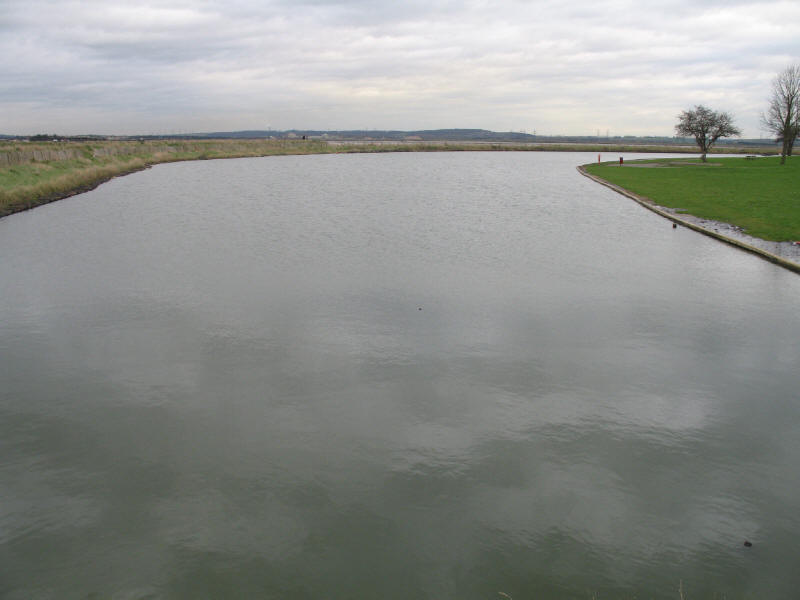
The moat around Coalhouse fort
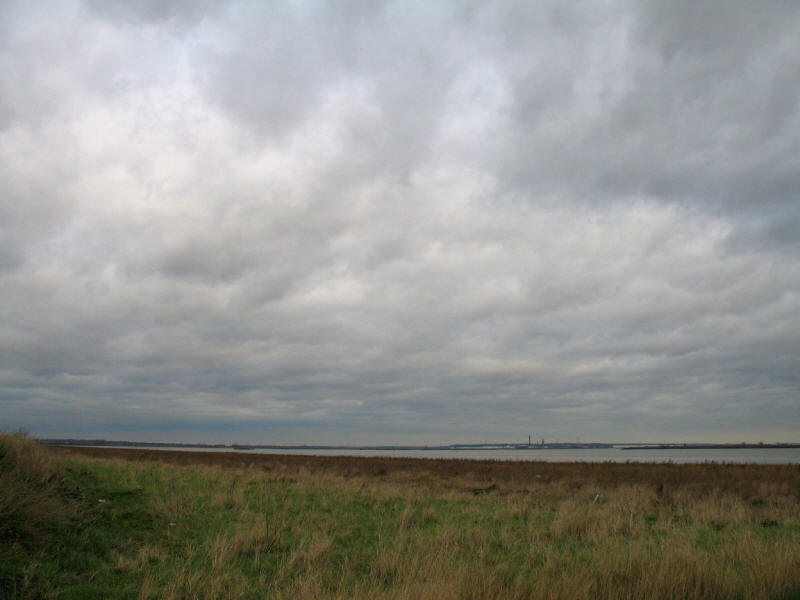
Looking downstream along the Thames
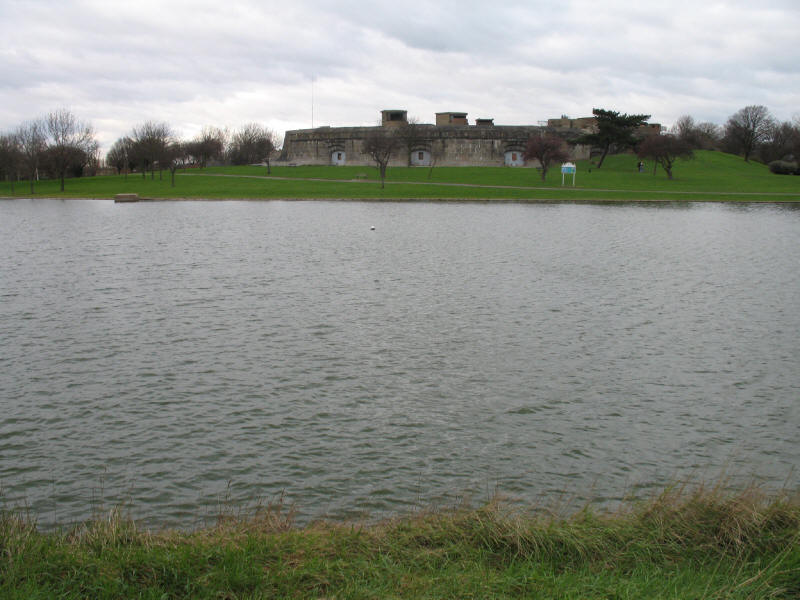
The fort continued its role as a military establishment through two world wars
although with the development of longer range artillery, its function in
defending the approach to the capital had become secondary by World War II. In
1962 the fort and surrounding works were sold to Thurrock Council, and since
1983 the fort has been leased to the Coalhouse Fort Project, whose long-term aim
is to restore the building to something resembling its original condition.
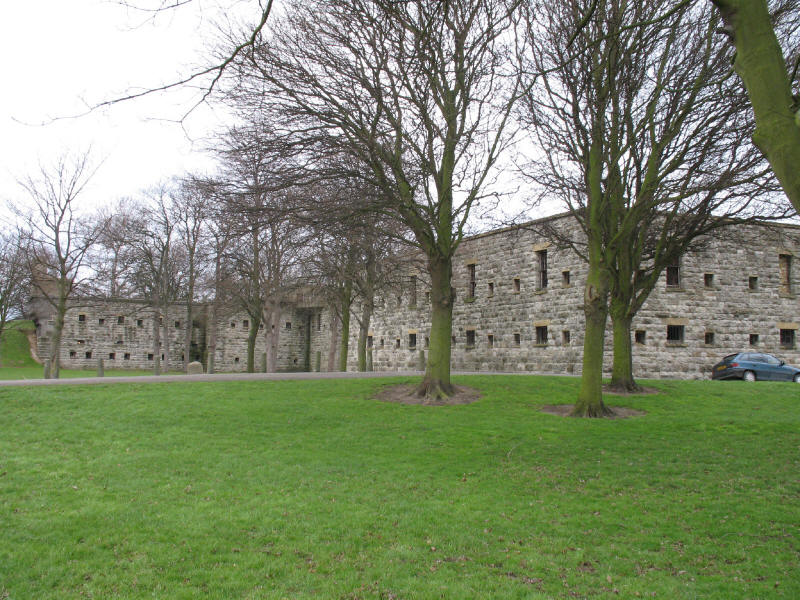
The "back" of the fort.
|






















